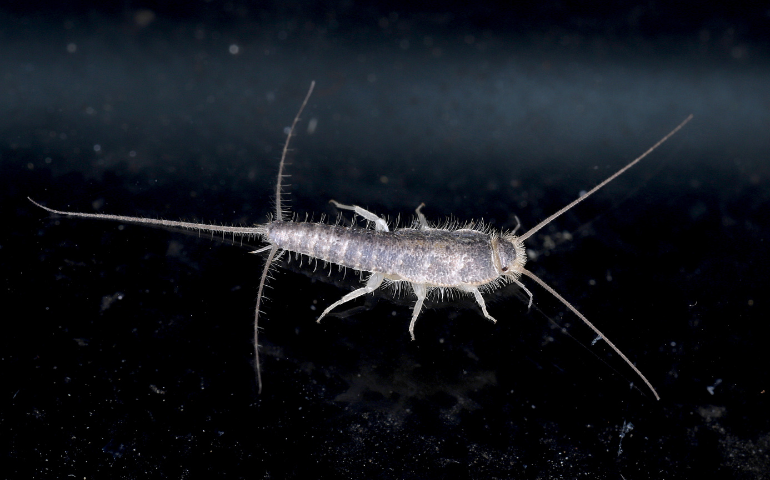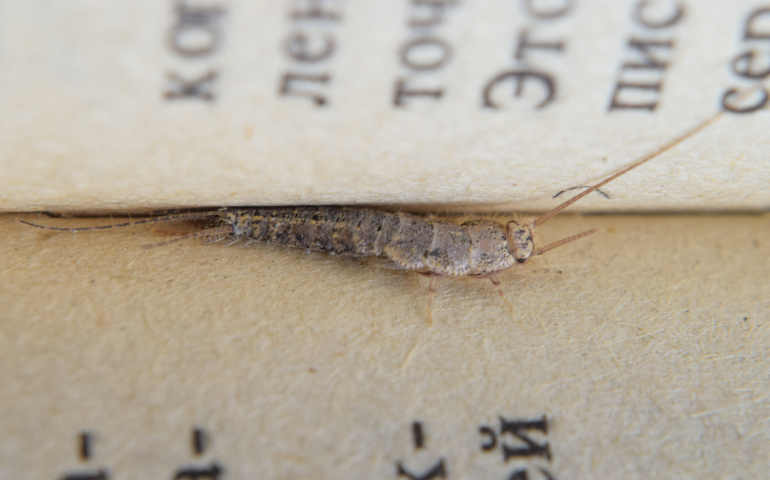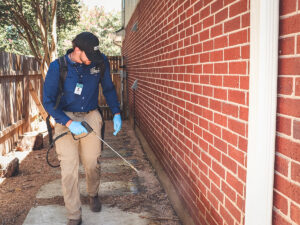Silverfish Overview
Silverfish are small, wingless insects that have existed for over 400 million years, making them one of the oldest insect species on Earth. Fossil evidence suggests that they have remained virtually unchanged since prehistoric times. Their name comes from their silvery-gray, scale-covered bodies and their fish-like movements. These nocturnal pests thrive in dark, damp environments and are often found in homes, libraries, and storage spaces. Silverfish are known for their ability to survive in a variety of conditions and can go for long periods without food.
Origin and History
Silverfish are believed to have originated in ancient, humid environments, thriving in moist and warm conditions similar to their present-day habitats. They have been found on every continent except Antarctica, adapting well to both natural and human-made environments. Because they feed on starchy materials like paper, fabrics, and glue, they have been unwanted house guests for centuries, damaging books, wallpaper, and clothing.
Anatomy and Characteristics
Silverfish have a distinctive teardrop-shaped body, measuring about 12-19mm in length. They have long antennae and three bristle-like appendages at the rear of their bodies. Despite their lack of wings, they are fast runners and can quickly escape when disturbed. Their diet consists mainly of starches, cellulose, and proteins found in household materials like paper, glue, fabrics, and food scraps.
Should I Be Worried if I Have Silverfish?
While silverfish don’t bite humans or spread diseases, they can be a nuisance due to their feeding habits. These insects love starchy materials, meaning they can damage books, wallpaper, clothing, and stored food. A few silverfish might not seem like a big problem, but they reproduce quickly, and an infestation can cause noticeable damage over time.
What Causes Silverfish in Homes?
Silverfish thrive in warm, humid environments. Several factors can attract them to your home:
- High Humidity – They prefer moisture-rich areas like basements, bathrooms, and kitchens.
- Accessible Food Sources – Silverfish feed on starches found in paper, fabric, glue, and stored dry goods like flour and cereal.
- Dark, Undisturbed Spaces – Cluttered areas such as attics, closets, and storage rooms provide perfect hiding spots.
- Leaks and Moisture Buildup – Plumbing leaks and condensation create ideal living conditions for silverfish.
How Do Silverfish Get Into Your House?
Silverfish can enter homes through various entry points:
- Gaps and Cracks – They squeeze through small cracks in foundations, windows, and doors.
- Cardboard Boxes and Books – Infested materials brought into the home can introduce silverfish.
- Plumbing and Vents – They may crawl in through pipes or ventilation systems.
Sealing entry points and maintaining a dry environment can help prevent them from coming inside.
What Kind of Damage Do Silverfish Cause?
Silverfish are known for chewing on items containing carbohydrates, leading to:
- Holes and Irregular Marks on Paper and Books – They consume book bindings, wallpaper glue, and documents.
- Damaged Clothing and Fabric – Natural fibers like cotton and linen may have small holes or discoloration.
- Contaminated Food – Silverfish infest stored grains and packaged foods.
- Yellow Stains – Their feeding and excrement can leave stains on surfaces and fabrics.
If you notice these signs, you may have a silverfish infestation that needs to be addressed.
Are Silverfish Poisonous?
No, silverfish are not poisonous to humans or pets. They do not bite or sting, and they don’t carry diseases. However, their presence can be unsettling, and their feeding habits can damage belongings over time.
Should I Squish Silverfish?
While it may be tempting to squish a silverfish when you see one, doing so is not the most effective way to deal with an infestation. Killing an individual silverfish does not address the root of the problem, as they reproduce quickly and tend to hide in hard-to-reach places. Instead of squishing them, focus on hiring a pest control company or eliminating their food sources, reducing humidity, and sealing entry points to prevent more from entering your home.
How to Get Rid of Silverfish in the House
Getting rid of silverfish requires a step-by-step approach. Here’s what you should do:
- Hire a Pest Control Professional – The most effective way to eliminate silverfish is by working with a pest control expert. We can assess the situation, identify problem areas, and provide targeted treatments.
- Seal Entry Points – A pest control inspector can locate entry points where silverfish are getting in and provide a quote for sealing them. If you prefer, you can seal small cracks and crevices yourself using caulk or weather stripping.
- Reduce Humidity – Use dehumidifiers, fix leaks, and improve ventilation in damp areas like basements, bathrooms, and attics.
- Store Food Securely – Keep dry goods like flour, cereal, and pet food in airtight containers to prevent contamination.
- Declutter and Clean Regularly – Remove unnecessary paper, books, cardboard boxes, and clutter where silverfish can hide.
- Use Sticky Traps – Place traps in areas where you’ve seen silverfish activity, such as behind furniture and in dark corners.
- Apply Boric Acid or Diatomaceous Earth – These natural powders can be used along baseboards and in cracks to help eliminate silverfish.
Conclusion
Silverfish are a common household pest that can cause significant damage to books, clothing, and stored food if left unchecked. Understanding their habits, entry points, and what attracts them to your home is key to effective prevention. By following the steps outlined in this guide, you can take control of a silverfish infestation and prevent future occurrences.
If you’re struggling with a silverfish problem and need professional assistance, Alta Pest Control is here to help. Our team of experts provides targeted treatments and prevention strategies to ensure your home remains silverfish-free. Contact us today to schedule your initial service and take the first step toward a pest-free home!
Frequently Asked Questions (FAQ)
Do silverfish mean my house is dirty?
No, silverfish are attracted to humidity and food sources like paper and fabric. A clean home can still have silverfish if moisture levels are high.
Can silverfish climb walls and ceilings?
Yes, silverfish are capable climbers and can navigate walls and ceilings to find food and hiding spots.
How long do silverfish live?
Silverfish can live for up to three years, making long-term control methods essential to keeping them out.
Do silverfish only come out at night?
Yes, silverfish are nocturnal and prefer dark environments, which is why they are often seen scurrying away when lights are turned on.
Will silverfish go away on their own?
No, silverfish are hardy pests that will continue to reproduce as long as they have food and a suitable environment. Proactive measures are necessary to eliminate them effectively.
Share article:



